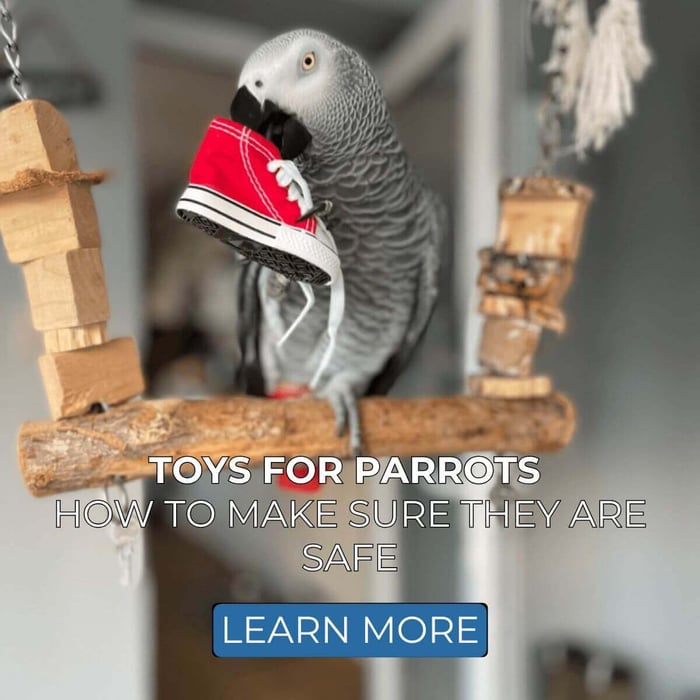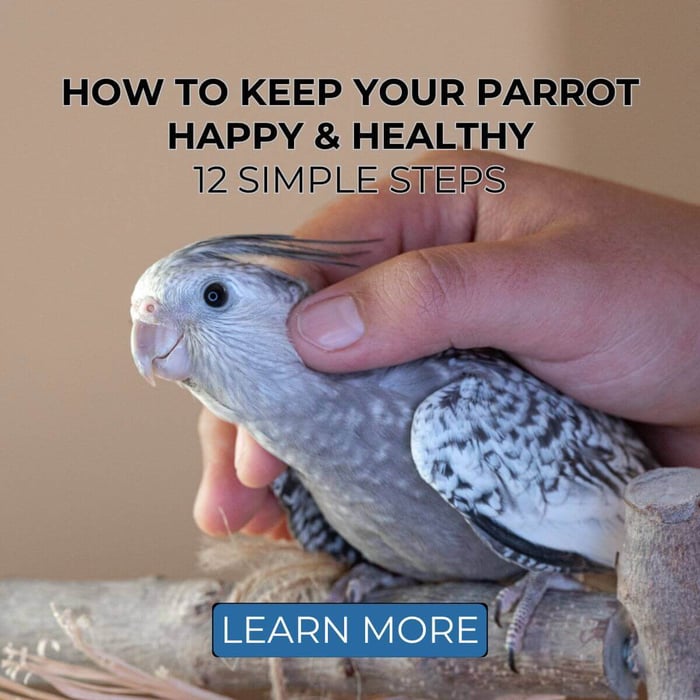5 Fun and Easy Tricks for Lovebirds
Did you know that just like bigger parrots, lovebirds can also learn a trick or two? Teaching tricks for lovebirds is a good enrichment exercise, and it is also great for bonding with your bird. It helps them communicate and forge a unique relationship with their trainer/owner. Teaching tricks will keep their smart brains busy in order to prevent boredom.
Here are some of our personal favourite fun and easy tricks for lovebirds.
1. Step Up
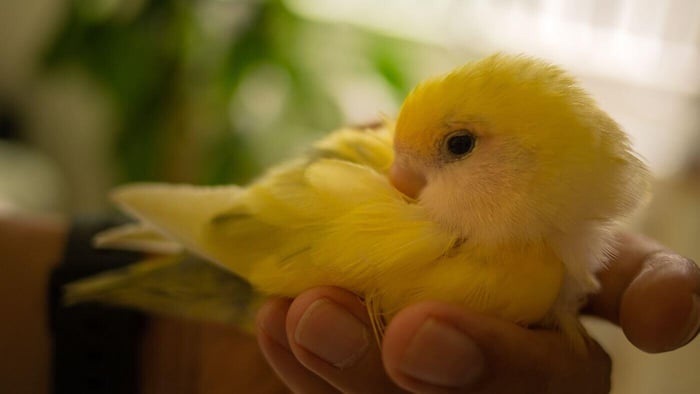
Seeing your lovebird step up on your finger is such a treat! And did you know that although this trick may seem basic, it's great to help forge a bond between bird and owner? Learning to step up helps dispel the bird's fear of humans and helps build trust.
Here's how you teach a lovebird to step up:
- First and foremost, slowly place your hand with a treat in the cage (but not too close) until the bird is comfortable. Just keep it there without moving! This enables your lovebird to become familiar with your hand and or finger. It can take a long time, but eventually, your lovebird will become curious enough to take the food from your hand.
- Once the bird accepts food from your hand, introduce your finger in between so it will have to step on it to get its treats. When it does so, say 'Step up!' or whatever command you prefer. Give it access to the food immediately as a reward.
- You can begin holding the food further away until, eventually, your lovebird doesn't even have to see it anymore to know it should step up. Give a reward for a job well done, and don't forget to use the 'Step up!' command as an auditory cue.
Repeat for a few minutes daily until the stepping-up trick becomes second nature. Congrats! You can now easily transport your lovebird, and it has taken away much of its fear of hands!
Don't forget: be persistent but patient. All parrots are smart and have unique temperaments. That's why it's important to exercise patience as you train your bird every day.
2. Talking

Lovebirds are parrots, and like many other parrot species, they have some capacity to learn how to talk! One of the most fun tricks for lovebirds is talking training. As with teaching a child how to talk, getting a lovebird to do so will require a good dose of hard work and patience.
Here's how you do it:
- Make sure your lovebird is already settled and familiar with its surroundings and with you so it'll be receptive to what you're trying to teach it.
- Sit comfortably in front of the bird and slowly and clearly say the chosen word. Make sure that the tone and intensity of voice are always the same. Your bird will probably look at you with interest and maybe some surprise but don't expect a response on the first try. At most, you'll get a screech as a reply!
- Keep repeating the word or phrase of choice for a few minutes multiple times a day, especially when you're feeding the bird. You want it to start associating the sound with positive things.
- It can take a very long time, but with some luck, eventually, you will hear your lovebird trying to repeat what you're saying. Be sure to reward it immediately with its favourite treat.
3. Waving
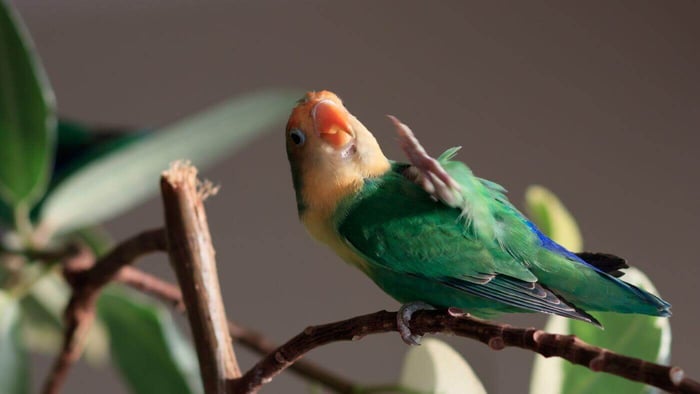
If your lovebird can already step up, you'll find that a wave is very easy to teach. It's done using both physical and verbal commands.
Here's how you teach a lovebird to wave:
- Get your lovebird out of its cage and place it somewhere comfortable, like a stand or perch.
- Now, you'll use the fact that the bird already knows how to step up. Basically, the idea is to do a 'half step-up'! You can use your finger or a stick.
- Hold your finger or the stick in front of the bird, but when it raises its foot to step up, remove it (though not so brusquely that you cause a fall!) and say, 'Wave!'. Give praise and a treat immediately.
- It can take a while, but eventually, you won't have to use the finger or stick anymore. If you say 'Wave!', your lovebird will understand that you want it to lift its foot.
4. Spin
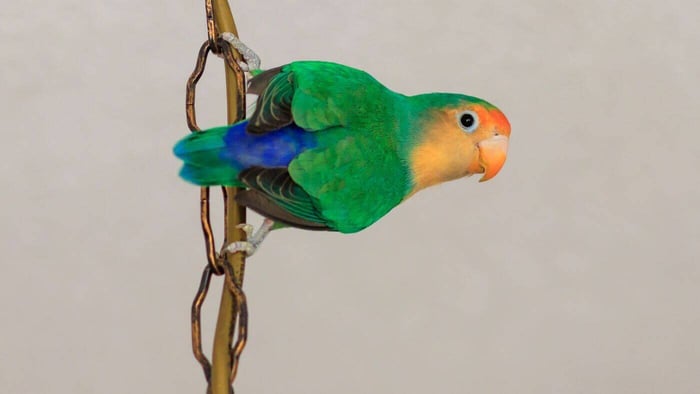
The turnaround trick or the spin is where the bird owner/trainer uses a cue, and the bird does a 360 turn around its perch. This is a very easy trick, and the only requisite is that the bird is already tame and already trained. This trick is taught by targeting the bird in a circle.
Here's how you teach a lovebird to spin:
- Refresh your lovebird's memory by doing some targeting. Make sure it's willing to turn its head toward the target stick/object and that it follows it.
- Once your lovebird is focused on the target, hold the target stick just ahead of where it is reaching and turn the stick around the bird so that it can follow. Keep the pace in such a way that it can keep up but does not have the chance to touch the stick before completing the 360-degree turn. While you do this, say, 'Spin!'
- Every time a spin is completed, offer a treat for a job well done. Keep practising, and eventually, your lovebird will do a full 360-degree spin whenever you give the verbal command.
There are various parrot toys out there that help in teaching fun tricks.
5. Teaching colours
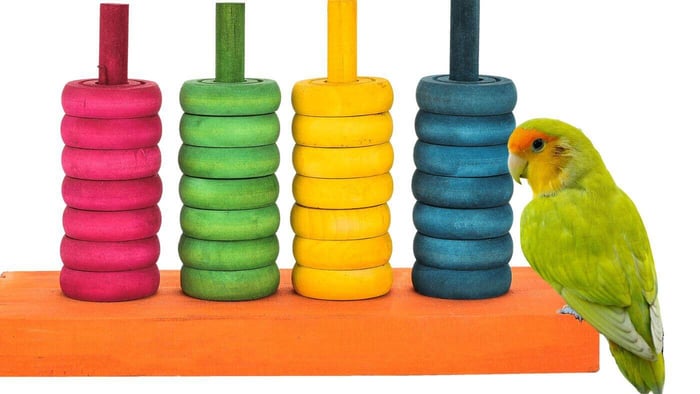
What better way to teach a bird how to identify colours than to do it the fun way? We like to use a colourful ring sorter toy. This not only displays the bird's intelligence but also showcases its agility, as it has to successfully manipulate the ring to go into the peg.
This is a more advanced one than the other tricks for lovebirds on this list. It's important to make sure the bird is already familiar with the fetch trick. You'll have to teach it to fetch a ring to you, then fetch a ring onto a peg, and lastly, teach colour matching. Once the bird knows how to put rings onto the peg, it is time to introduce colours. Start by adding just one more peg to the existing ring/peg combo. Your lovebird will first have to learn to ignore the different coloured pegs and continue putting the ring on the matching peg as it did before. This will happen quickly.
Things get more complicated when you start shifting positions or adding colours. So, little by little, lay on the complexity but not all at once! First, change places between the pegs. We want the bird to match by colour and not by location, after all. So frequently rearrange the positions of the pegs so that the bird can learn that only colour matching is required.
Whenever the bird puts the ring on the wrong peg, ignore it. Don't click (if you're using a clicker), don't give treats, don't say anything. Just stare blankly away from the bird for a few seconds to show that putting the ring on the wrong peg is completely irrelevant to you, and then take it off and offer the chance to start again. There is no consequence for getting it wrong, but there is no reward either. Attention and treats only come to get it right.
It all sounds complicated, but the extended training needed to teach this trick is perfect for building a bond and preventing your lovebird from getting bored. Try to do 15 minutes of training a few times a day, and if it's not working out, just try again tomorrow!
Keep in mind: that all these tricks will always need to be reinforced. Positive reinforcement for birds involves giving something they enjoy as a reward for good behaviour: a treat or attention.
Tricks for Lovebirds: Conclusion
There are endless tricks for lovebirds out there that you can teach your feathered friend. Teaching tricks should not always be about showing off or just about keeping their brains busy. It's also about having fun, building a bond and getting to know the character and traits that will make you fall in love all over again with these fantastic little parrots!

